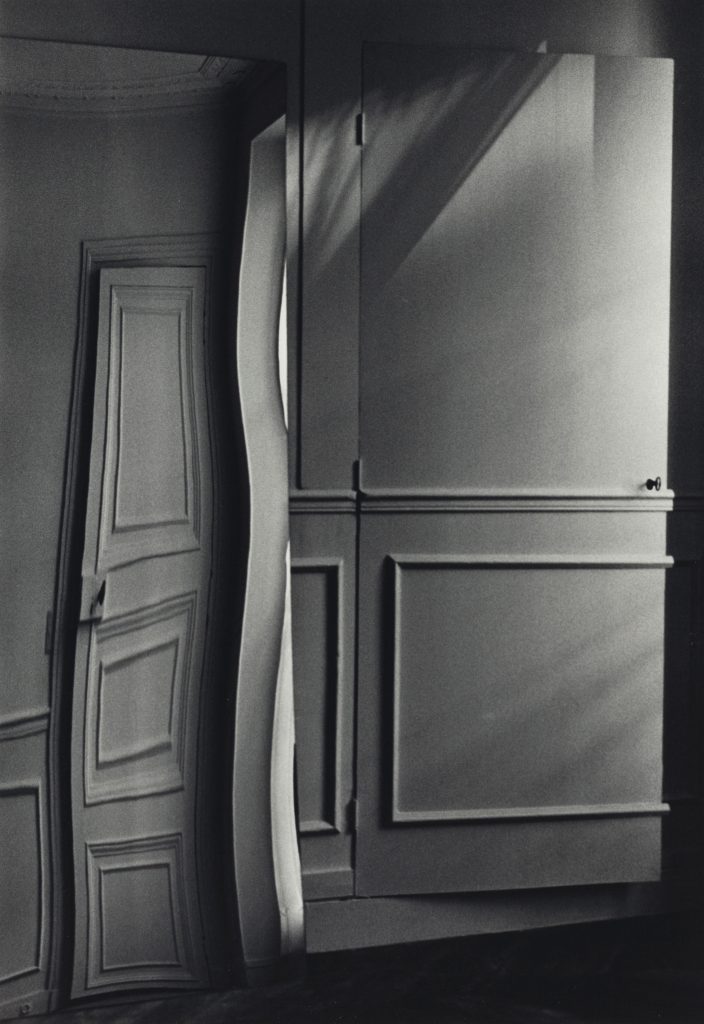André Kertész (1894-1985)
Door Distortion, 1984
Gelatin silver print
Courtesy of the Leonid and Tatiana Nevzlin Collection
The Hungarian-born photographer André Kertész is known for his groundbreaking contributions to photographic composition. In 1984, fifty years after the creation of his iconic Distortion series, he traveled through Paris and produced a sequel. The ghostly images depicted here are like pure manifestations of the unconscious.
Must Know
Andre Kertész whose original name was Andor Kohn, trained as a stockbroker but became interested in photography at a young age. What began as a hobby became a calling, and he moved to Paris in 1925. Just two years later, he was given a one-man show at the art gallery Au Sacre du Printemps, and in 1928, he became a photojournalist. His work, hallmarked by unusual camera angles and cutting-edge subjects, is widely considered to have made a major contribution to modernist photography.
Like so many other Jewish photographers working in Paris at the time, Kertész was motivated to emigrate by the rise of Nazism. he moved to New York in 1936, and worked there for more than 30 years shooting photos for the global media company, Condé-Nast.
Though Kertész lived through both World Wars and significant upheavals throughout Europe, politics played little role in his photographs. Privileging lyricism and distortion over reality, he aligned himself with the Dada movement and created artful photographs that are still imbued with haunting power. While he photographed the streets and interiors of a city still repairing its battle wounds, his black-and-white shots focused on the intimate and voyeuristic: a spiral staircase, a far-off building seen through a clock face, a group of picnickers seen from behind trees. Kertesz gets a distorting mirror at the flea market, and makes about two hundred Distortions in a few weeks. In the artist’s own words: “I purchased two deforming mirrors at the flea market – the type of thing that is found in amusement parks. With the existing light and an old lens invented by Hugo Meyer, I have realised amusing impressions. Some images resemble sculptures, whereas others became grotesque and frightening.”
This work done on a trip to Paris a year before his death recalls the earlier distortions that he had done in the 1930’s.

